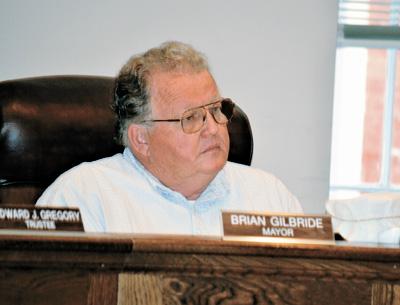Chief, Mayor in Standoff
Chief, Mayor in Standoff

“I am disappointed that he shot down federal money that could have saved or helped maintain the 11th position,” Kevin Duchemin, a Sag Harbor Village board member, said on Tuesday of Mayor Brian Gilbride’s announcement last week that the village would not apply for a grant that the police chief, Tom Fabiano, had suggested as a means to help hold onto an officer whose job was eliminated last month.
The Department of Justice grant could have provided $125,000 over a three-year period as part of a program to strengthen community policing by hiring additional officers. But, according to Mayor Gilbride, “the village would have had to put in 100-something-thousand a year to guarantee the position.” To win the grant, the village would have to commit to retaining the officer it paid for, something Mr. Gilbride said he could not do.
“Over a four-year period,” Mayor Gilbride said at a May 29 meeting to end the fiscal year, “we would have put about $500,000 in.”
Two of the village police force’s officers were written out of the budget last month. One was David Driscoll, who was named officer of the year in December; the other had already resigned in October.
The chief fought vehemently against Mr. Driscoll’s layoff.
Raising the grant issue after the mayor asked for a motion to adjourn the May 29 meeting, Mr. Duchemin questioned his numbers, reminding him of the approximate $90,000 that Chief Fabiano had reported as unused in his current budget. Although Mayor Gilbride asked again for a motion to adjourn, Mr. Duchemin continued, “Why can’t we keep Dave through the summer with that $90,000?”
“I don’t know if he’s got $90,000,” the mayor said, adding, “it doesn’t work that way.”
“If the chief has $90,000 left in his budget, why would a layoff be necessary at all?” Patrick Milazzo, the P.B.A. president asked on Tuesday. “At the very least,” he wondered, “why not keep him on during the summer as Trustee Duchemin had asked?”
Chief Fabiano asked at the May 29 meeting if the mayor had made any calculations about hiring an entry-level officer, rather than one with a higher-tiered salary like Mr. Driscoll, who came to the village three years ago after several years on Southampton Town’s force.
“It still means committing $250,000,” the mayor said. The application deadline was Tuesday. The mayor had said if it was extended until after June 18, village election day, “Sandra can make her mind up what she wants to do.” He was referring to Sandra Schroeder, who is running against him for mayor.
With the busy months upon him and fewer officers on the force, Chief Fabiano said he now has no option but to replace two officers with part-timers and overtime. His request at the May 29 meeting to hire a part-time officer at $25 per hour was denied.
“No,” Mayor Gilbride said. “We will discuss it at the June 11 meeting.”
“Why can’t we hire a part-time guy now?” Chief Fabiano asked a second time.
“This is the end-of-the-year meeting,” Mayor Gilbride replied.
When the chief pointed out that there were other items besides fiscal matters on the agenda, Mayor Gilbride again put him off.
“I laid off a guy on the 1st,” the chief said. “Why can’t we do it today?”
“We’ll do it on the 11th, Tom,” the mayor said.

